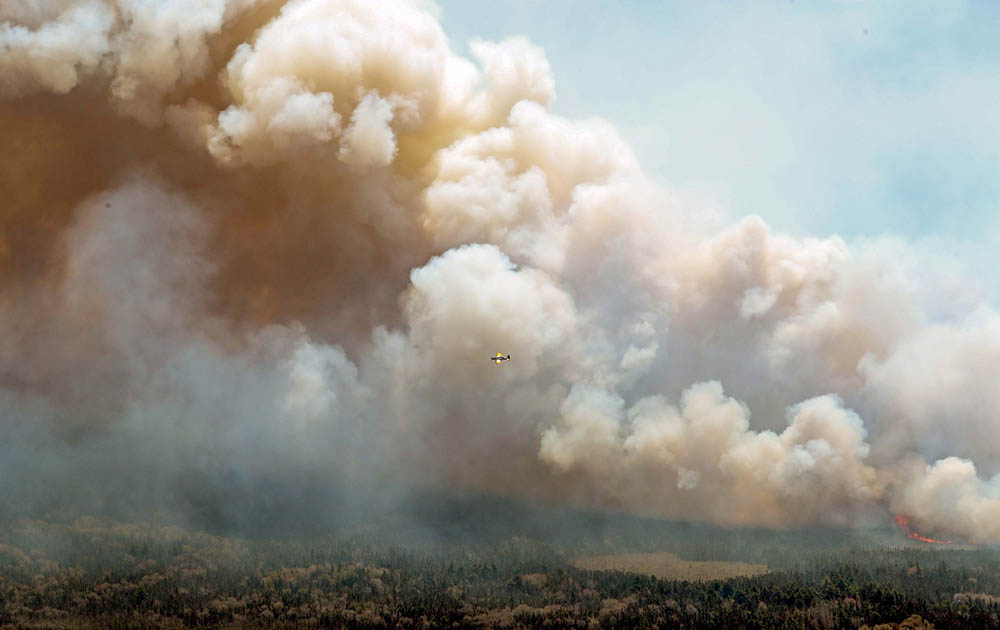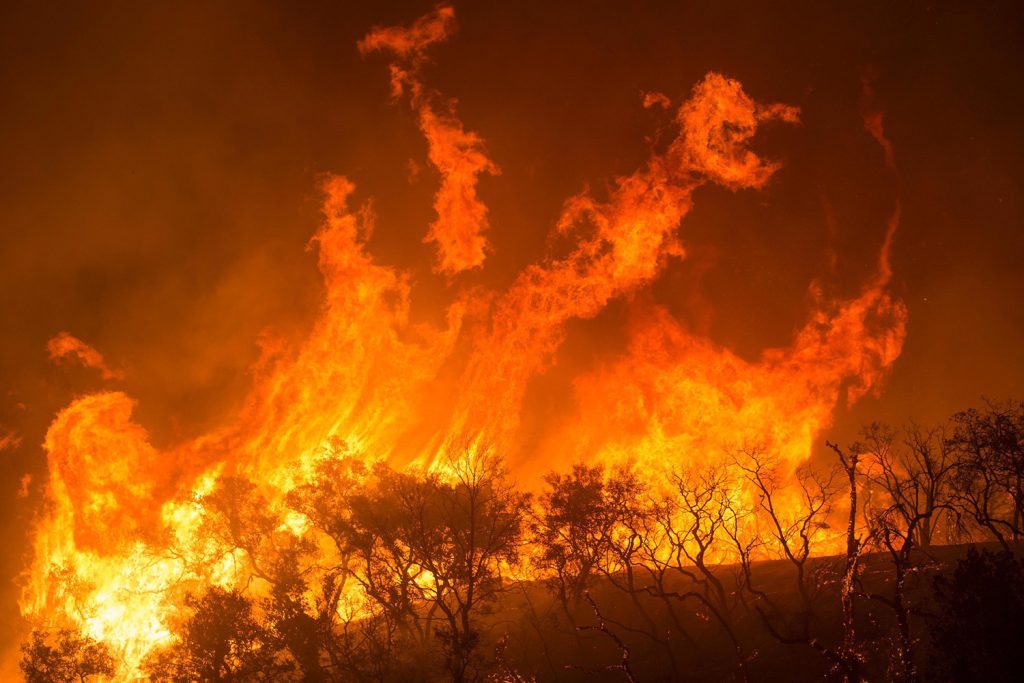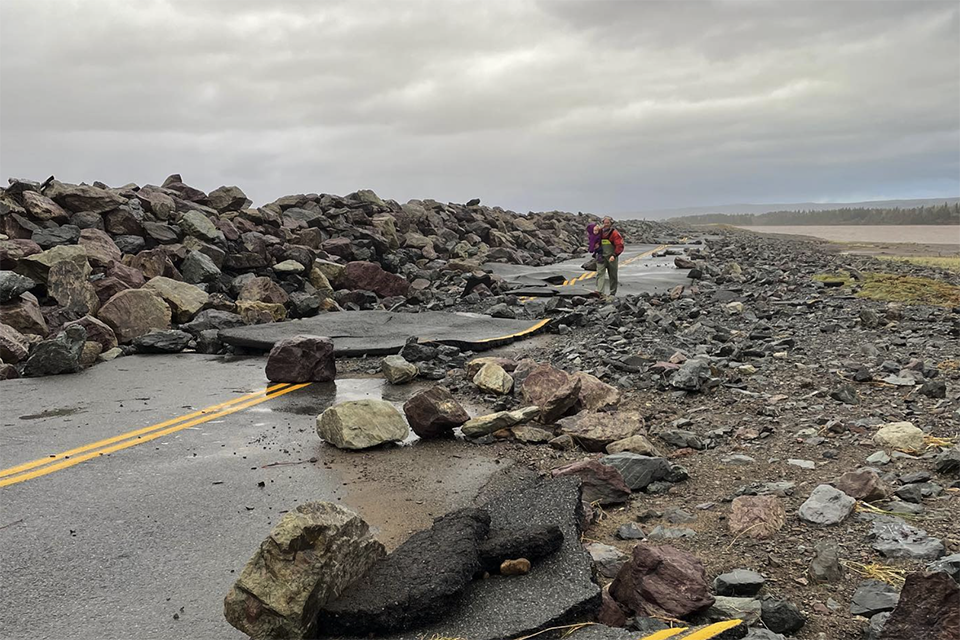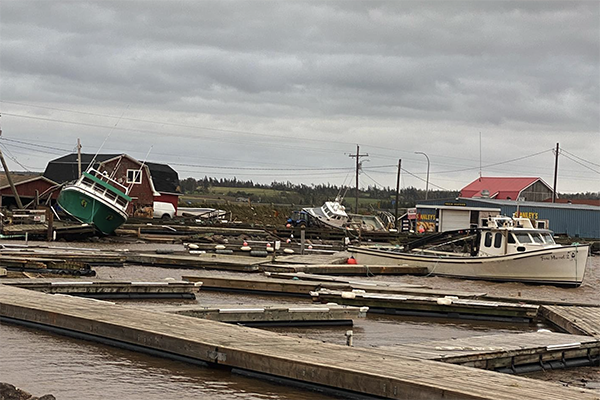Out-of-control Nova Scotia wildfire threatens to disrupt lobster fisheries, aquaculture

With wildfires raging across Canada, Nova Scotia’s seafood industry now finds itself at the frontline of a crisis.
On Monday, wildfires were burning across nine provinces and territories in Canada, with experts calling this an “unprecedented fire season.” According to the most recent data from the Canadian Interagency Forest Fire Centre, there are currently 423 active wildfires burning across the country – 250 of which are classified as “out of control” as of June 4, 2023. Officials report that 100,000 people have been evacuated across the country since early May.
In Nova Scotia, the largest wildfire in the province’s history continues to burn out of control in Shelburne County, while firefighters contain a blaze near Halifax that damaged or destroyed over 150 suburban residences. And the province’s seafood sector is also feeling the heat, as the Nova Scotia wildfire threatens to disrupt lobster fishing, aquaculture facilities and the overall supply chain.
“When you’ve got a lot of inventory – millions of dollars – it’s critical and a significant concern to our members who have these facilities,” Osborne Burke, president of the Nova Scotia Seafood Alliance, said in an interview with CBC News. “You take any one of these operations out of a small community and it’s the heart of the community.”
According to CBC News, as many as 20 seafood processing and holding facilities along Nova Scotia’s South Shore could be at risk because they fall within the wildfire evacuation order areas in Shelburne County. Industry leaders report that this would be “economically devastating” for the region, as Shelburne County is home to lobster fishing area 33/34 – the most productive lobster fishery in the world.
Burke said between 15 and 20 of the alliance’s members are affected by evacuation orders. Some facilities have generators that are automatically triggered when the power goes out, while others require a switch to be manually activated.
However, the reliance on generators to maintain operations and preserve live lobster in holding tanks presents challenges. Nova Scotia Fisheries Minister Steve Craig said that someone must get fuel to those generators to keep the plants operating.
“Nobody wants to see a fuel truck trying to go through areas that are on fire,” Craig said.
Is $100 million enough to help Atlantic Canada’s seafood industry recover from Hurricane Fiona?
Burke reported people are under “extreme stress” worrying about the future of their facilities and the loss of orders for live lobster. Trucks either cannot get from sites in Shelburne County to the airport or because there’s no one to load and offload trucks.
Victoria Fisheries Co-op in Neils Harbour, Cape Breton had to cancel a recent order for 400 crates of lobster because the customer in Shelburne didn’t have workers to offload the delivery. Burke told CBC News that such examples “show the impact of the wildfires reaches across the industry from one end of the province to the other.”
The wildfire has also limited how much fishing can occur, with many families and fishermen evacuating their homes and the area. In response, federal Fisheries, Oceans and the Canadian Coast Guard Minister Joyce Murray has extended the season for lobster fishing area 33 to midnight on Tuesday to give people more time to haul up their gear while trying to deal with the fires.
“I also want to acknowledge that many of the harvesters in these communities are volunteer firefighters responding to this crisis,” the minister wrote on Twitter. “Thank you for your service to your community, and for keeping people safe.”
Senior climatologist at Environment Canada, Dave Phillips, told CTV News that high temperatures – typically not seen until the summer months – are causing dry conditions and allowing forest fires to break out. Some “very erratic” winds are causing the fires to spread.
In the case of Atlantic Canada, Phillips said the millions of trees brought down by Hurricane Fiona last year have had several months to dry out.
“It was like a proper region of kindling wood,” he said in an interview with CTV News. “Canada this year is really almost…a tinderbox in a lot of areas.”
Government officials and scientists warn that this is the “new normal,” as the wildfires are linked to the effects of climate change.
“It is a simple fact that Canada is experiencing the impacts of climate change, including more frequent and more extreme wildfires,” said Natural Resources Minister Jonathan Wilkinson. “And the amount of forests burned by wildfire is projected to double by 2050 due to our changing climate, causing longer and more intense wildfire seasons, more extreme weather conditions and increased drought.”
Follow the Advocate on Twitter @GSA_Advocate
Now that you've reached the end of the article ...
… please consider supporting GSA’s mission to advance responsible seafood practices through education, advocacy and third-party assurances. The Advocate aims to document the evolution of responsible seafood practices and share the expansive knowledge of our vast network of contributors.
By becoming a Global Seafood Alliance member, you’re ensuring that all of the pre-competitive work we do through member benefits, resources and events can continue. Individual membership costs just $50 a year.
Not a GSA member? Join us.
Author
-

Lisa Jackson
Associate Editor Lisa Jackson is a writer who lives on the lands of the Anishinaabe and Haudenosaunee nations in Dish with One Spoon territory and covers a range of food and environmental issues. Her work has been featured in Al Jazeera News, The Globe & Mail and The Toronto Star.
Tagged With
Related Posts

Responsibility
How wildfires – and efforts to stop them – threaten marine ecosystems and aquaculture
Wildfires are a growing threat that could impact aquaculture due to increasing smoke, worsening water quality and fire-retardant drops.

Intelligence
Hurricane Fiona was a ‘historic, extreme event’ for Atlantic Canada – and hit the seafood sector hard
As the clean-up from Hurricane Fiona begins, Atlantic Canada communities survey the damage caused to fisheries and aquaculture operations.

Intelligence
Atlantic Canada’s shellfish sector to get $53 million in Hurricane Fiona relief
The Canadian government will provide funding for two years for Atlantic Canada's shellfish sector to help with the Hurricane Fiona recovery.

Intelligence
Is $100 million enough to help Atlantic Canada’s seafood industry recover from Hurricane Fiona?
Hurricane Fiona damaged critical infrastructure and gear, leaving fishing and aquaculture operations in Atlantic Canada struggling to stay afloat.


